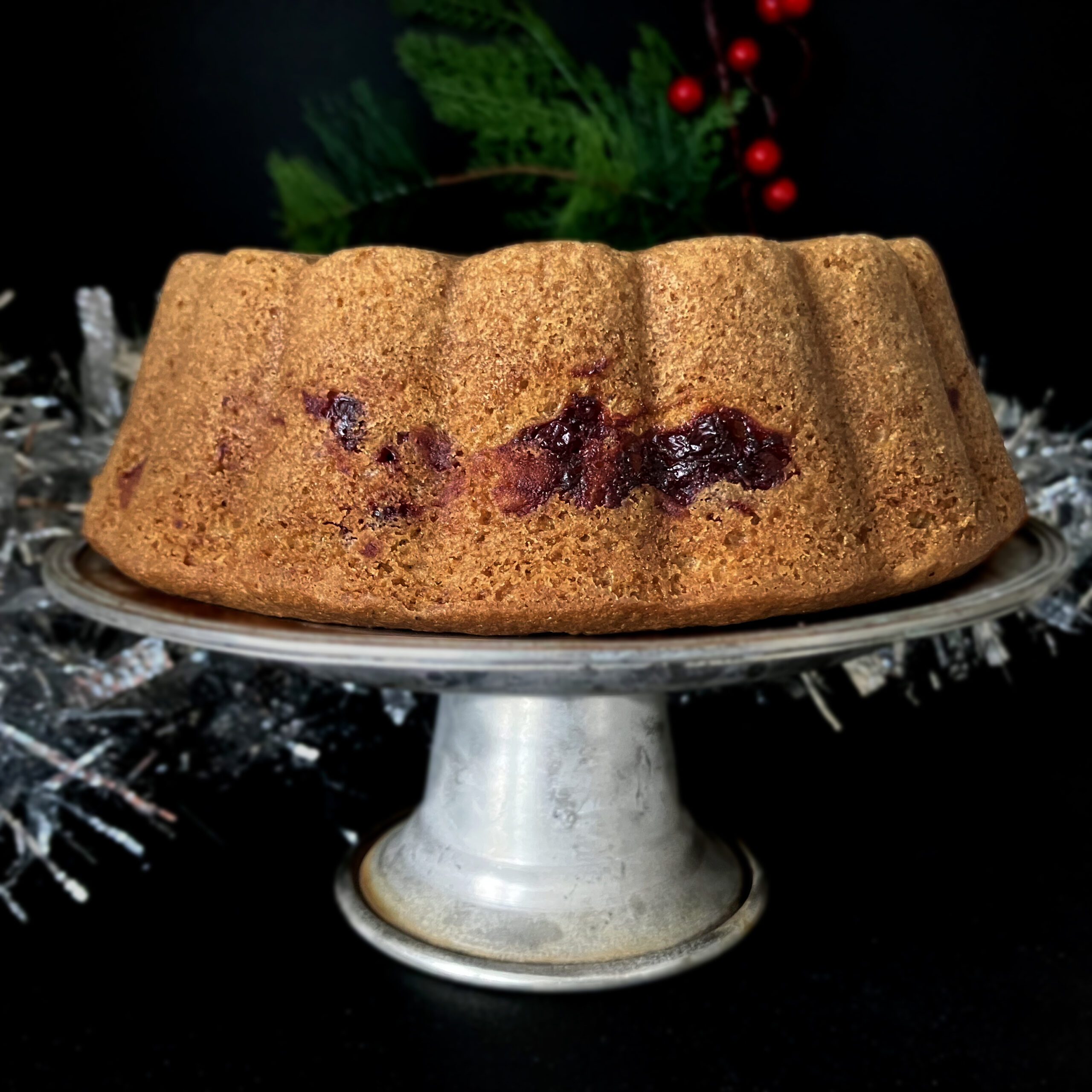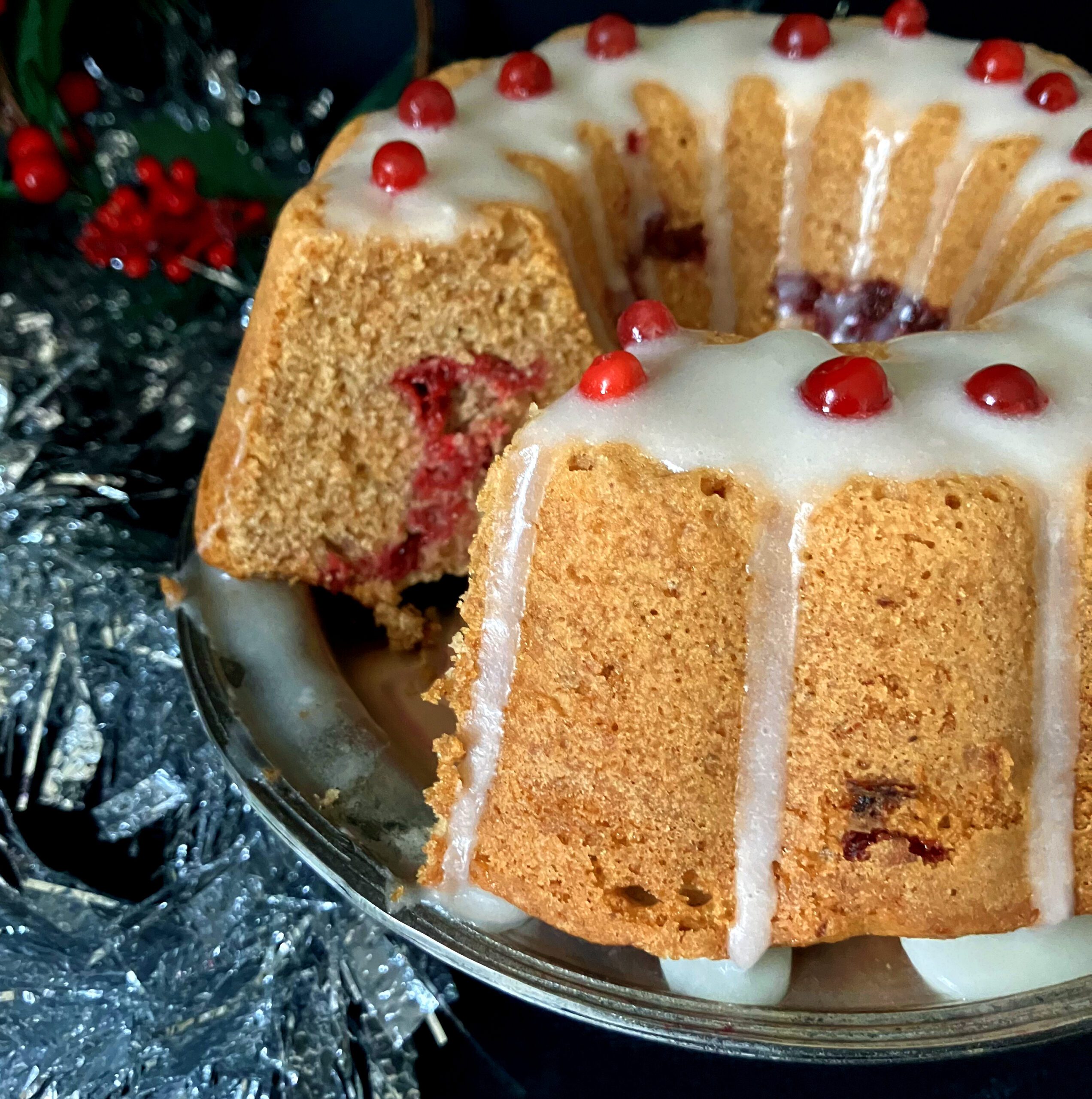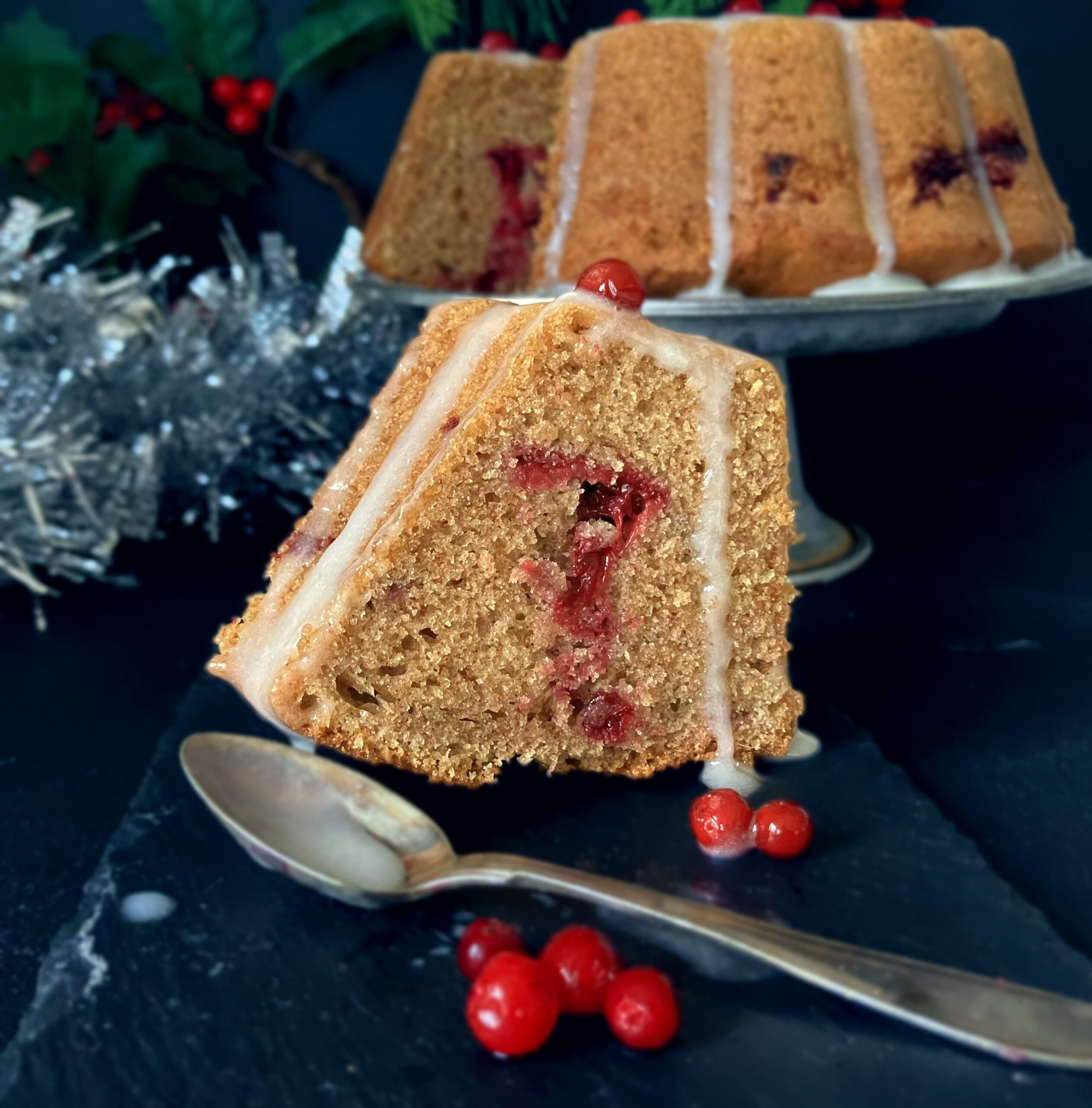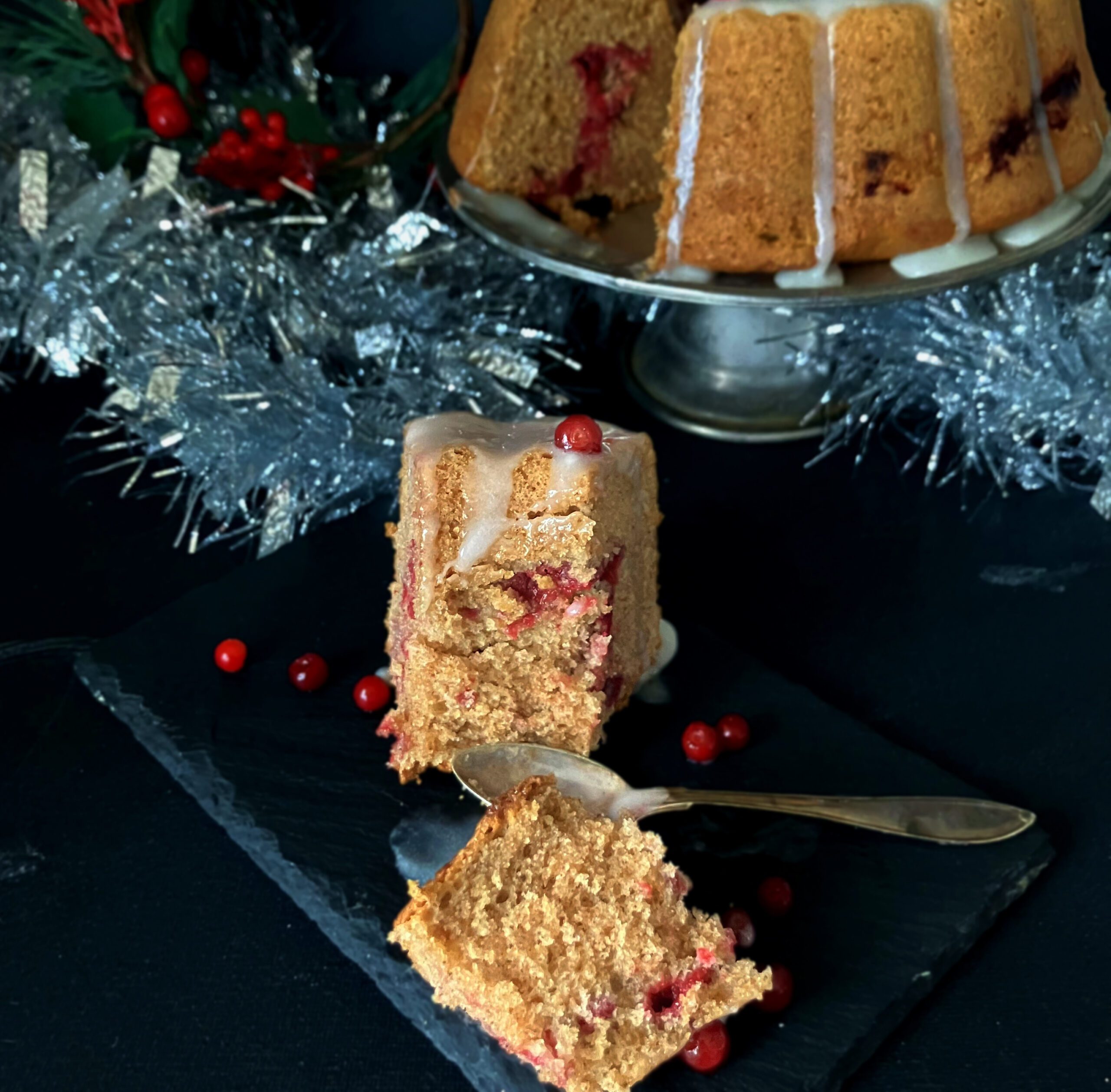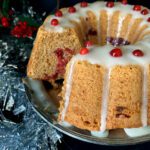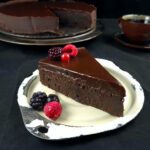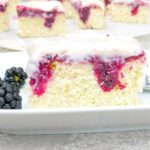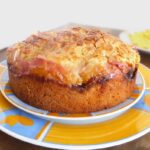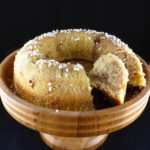Spelt Swedish Soft Gingerbread
This spelt Swedish gingerbread cake, also known as mjukpepparkaka, is a favourite during the festive season. Made with gräddfil (similar to sour cream), classic gingerbread spices and lingonberries, the cake is topped with a tangy gräddfil icing. The recipe is easily adapted to the ingredients you can get hold of, and the spelt can be swapped out for all-purpose (plain) flour.
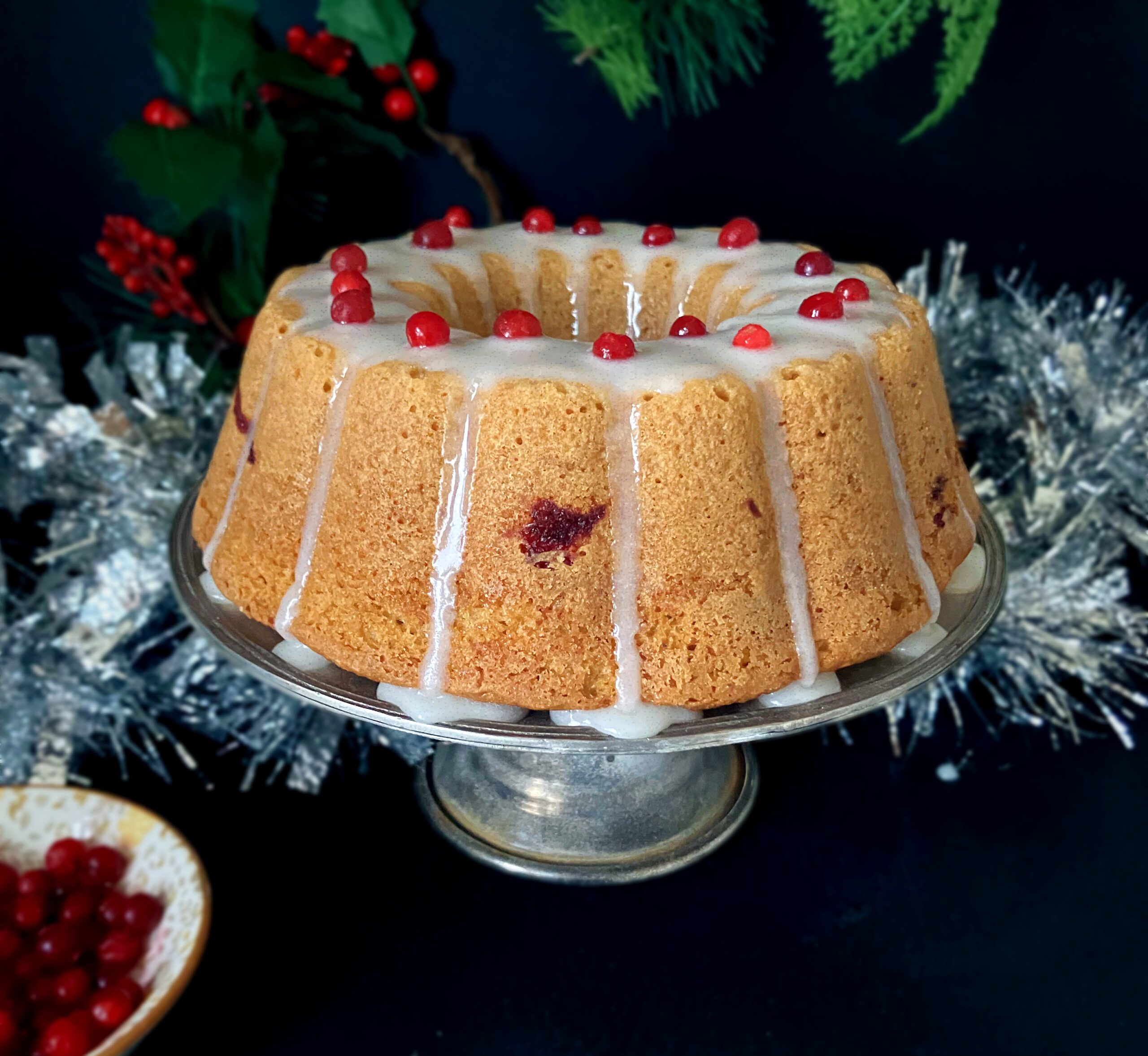
Some of the links in this post might be affiliate links. Please read my disclosure and privacy policy for more information.
_________
|
|
| What is mjukpepparkaka? |
| What is gräddfil? |
| Swedish bundt cake pans |
| The pan size is most important |
| What are lingonberries? |
| Substitutes for lingonberries |
| A simple gräddfil icing |
| More Swedish cakes |
This cake is going to knock your socks off. Soft, deliriously moist cake with the unmistakeable spiced flavour of Christmas.
What is mjukpepparkaka?
In Sweden, when we refer to pepparkaka (plural pepparkakor), we usually mean one thing. The deliriously crunchy cookies which enough ginger to make your eyes water. I really love the stuff and often make my own pepparkakor dough. But, waiting silently behind the famous pepparkakor is something equally as delicious, but perhaps in some ways, a little more understated. It’s mjukpepparkaka, which directly translated means soft gingerbread.
Outside of Sweden (or perhaps even Scandinavia), we wouldn’t refer to this as soft gingerbread. We would just call it gingerbread, or even ginger cake (to differentiate from the cookies).
Like crunchy gingerbread, Swedish soft gingerbread is flavoured with the traditional spices of ginger, cinnamon, cardamom and cloves. Traditionally it is made in a bundt pan, but can also be created in a tray pan. As the name suggests, it is surprisingly soft, with a lot of its moist-ness coming from the gräddfil.
What is gräddfil?
Gräddfil is a dairy product very popular in Sweden. It was first introduced in the 1950s as a luxury product and was mainly eaten during the summer months, most notably as part of the midsummer celebrations towards the end of June. However, these days, it is enjoyed all year round. The product was originally going to be called sur grädde, which is the direct translation of sour cream, but it was decided that it didn’t sound too appetising, and the moniker gräddfil was born.
As you might expect, gräddfil is very close to sour cream, with a similar consistency and flavour. However, gräddfil has a milder taste and is noticeably less acidic than yoghurt. Gräddfil is used for any number of main dishes, and is often found in baked goods. Like sour cream and Greek yoghurt, it is a wonderful moistening agent that is so great in cakes.
I am aware that most of my readers fall outside of Sweden. The good news is that for this recipe, you can easily substitute the gräddfil with either sour cream or Greek yoghurt.
Swedish bundt cake pans
Although most people are very familiar with bundt pans, they are a little different in Sweden. Sweden is a country known for its unpretentious attitude when it comes to most things, and cooking is no exception. Their recipes are uncomplicated using every day, simple ingredients, and the bundt pans used here reflect that.
One noticeable difference are the patterns. Many bundt pans in the US display intricate patterns, swirls and grooves. The pans are also a little smaller in size. Again, this is down to enjoying cake in moderation and not needing to make a cake big enough to feed 5000 people. That being said, Sweden is greatly affected by trends going on in other places, and cupcakes and brownies are just as common here these days as anywhere else. Therefore, there has definitely been a move towards more intricate bundt pans, such as those made by Nordic Ware.
The most common bundt pan used in Sweden is a tube pan (also known as a savarin). They are used for cakes, such as sockerkakor (sugar cakes) and this mjukpepparkaka. These kind of cakes are light and airy, compared to denser pound cakes, which are baked in more solid bundt pans. If you’d like more information about the differences between the two, Southern Living has a great post explaining.
The pan size is most important
The pan I used for this cake is a little more fluted at the sides than a tube pan. I have scoured the internet to find one similar and nothing. I bought mine from the local charity shop, and I have a feeling that it is old. It doesn’t matter what pan you use. Go for a tube pan or simple bundt, and I don’t think you’ll go far wrong. The most important thing is the size: my pan holds 1.3 litres, which is about 45 fluid ounces.
What are lingonberries?
An important part of this cake is the lingonberries. Super tart, tiny berries that make the cake feel very festive. However, in Sweden, lingonberries are not just for Christmas. If you’ve ever found yourself in IKEA, you will have undoubtedly either eaten them served up with meatballs, or preserved in jars. Fresh lingonberries are hard to come by, especially outside of Sweden and other nordic countries. If you are lucky, you can pick up some in local supermarkets between August and October, other than that, it’s a case of locating them in the frozen aisle.
Lingonberries are surprisingly small. They also pack quite a bitter punch. Because of this, they are rarely eaten raw. Instead, they are preserved with sugar, cooked or added to baked goods, such as cheesecakes and cakes. The bitterness means that quite a bit of sugar is needed to make them palatable, but for this cake, I decided to reduce them down to a thick sauce, but not add any sugar. The tartness works beautifully up against the sweet cake, and I definitely recommend not adding anything sweet to them.
Substitutes for lingonberries
Although lingonberries are often thought of as being the same as cranberries, there are some notable differences. Cranberries taste a little more sour, are noticeably bigger, and do not have quite as dark a red hue as lingonberries.
For this recipe, you could easily swap out the lingonberries for cranberries or even red currants. Or, you could use any kind of fruit jam, such as raspberry or strawberry. However, there’s nothing to say that you need have fruit at all, so if you feel like it, just omit the berries completely.
A simple gräddfil icing
As mentioned, gräddfil is creamy and mild in taste. To keep with the theme, I also decided to also use it in the icing. There’s nothing more complicated than mixing one or two tablespoons with enough icing sugar to make a runny drizzle. Of course, as above, you can substitute this with Greek yoghurt or sour cream, or just leave it out and use milk or water mixed with the powdered sugar instead. Alternatively, give it a light dusting of icing sugar.
Kärleksmums (Swedish chocolate cake squares)
Swedish cardamom layered cream cake
Classic kladdkaka (Swedish sticky cake)
Princesstårta (layer cake with cream and marzipan paste)
Spelt Swedish Gingerbread
Ingredients
Cake:
- 100g (3½ oz) lingonberries (frozen)
- 100g (¼ cup + 3 tbsp) butter (melted)
- 160g (¾ cup + 1 tbsp) sugar
- 2 eggs (medium - weighing approx. 130g)
- 100g (3½ oz) gräddfil (see note 1)
- 2 tsp cinnamon
- 1½ tsp baking powder
- ½ tsp baking soda
- 2 tsp ginger (see note 2)
- ⅛ tsp ground cloves
- ¼ tsp cardamom
- 180g (1½ cups) spelt flour (see note 3)
Icing:
- 2 tbsp gräddfil (see note 1)
- icing / powdered sugar (as much as required)
- lingonberries (for decoration)
Instructions
Cake:
- Add the lingonberries to a pan and gently heat until they burst. This should take no longer than a couple of minutes. Mash with a fork.
- Place the berries in the fridge to cool while you prepare the other ingredients.
- Pre-heat the oven to 175℃ (350℉).
- Grease and flour a bundt or tube pan. See here for more information.
- Melt the butter and set to one side.
- In a bowl or mixer, add the eggs and sugar. Whisk until light and fluffy (and the colour becomes paler).
- Add the cooled melted butter and gräddfil (see note 1). Continue whisking until everything is combined.
- Mix all of the remaining dry ingredients together and slowly add to the wet. Stop mixing when everything pulls together.
- Pour around ⅔ of your batter into your pan.
- Take the cooled lingonberries and dollop over the top of your batter, and swirl it in with a knife.
- Pour over the remaining batter and level it off. Bang the pan on the counter a couple of times to get rid of any air bubbles.
- Bake in the middle of the oven for around 35 minutes (start checking at around 25 minutes). An inserted skewer or toothpick will come out clean when the cake is ready.
- Remove from the oven and allow the cake to sit in the pan for 10 minutes.
- When ready, remove the cake for the pan and allow to cool completely before icing.
Icing:
- Using one or two tablespoons of gräddfil (see note 1), add as much icing (powdered) sugar as needed to make a runny icing.
- Drizzle over the top of the cake, and allow it to drip over the sides and down the ridges.
- Right before serving, top with a few lingonberries for decoration. Slice and enjoy! It freezes beautifully, so pop any cake not eaten into the freezer.
Notes
- Gräddfil can be substituted for Greek yoghurt or sour cream. Please read for more information.
- The cake has a mild ginger flavour. If you like it, feel free to add a little more.
- You can use all-purpose in place of the spelt. Just use the same measurements as specified.


